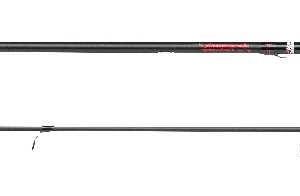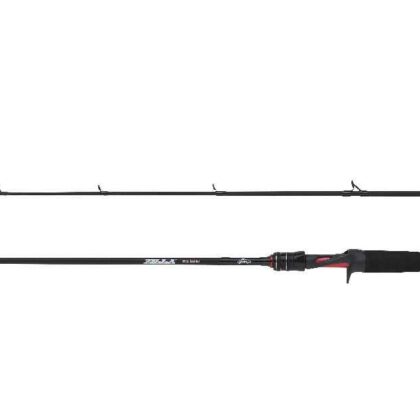











100% Original product that covered warranty by the vendor.
You have the right to return your orders within 30 days.
Your orders are shipped seamlessly between countries.
Your payments are secure with our private security network.
Predator fishing is a popular pastime in the UK. The waters around the British Isles are home to many different species of fish, including pike, zander, and perch, and these fish provide a challenging and exciting target for anglers.
To successfully catch these predators, it is important to have the right equipment. One of the most important pieces of kit for predator fishing is the rod, and there are many options available on the market. In this article, we will take a closer look at predator rods and their suitability for fishing in the UK.
Types of Predator Rods
There are several types of predator rods available, and each one has its own advantages and disadvantages. When choosing a predator rod, it is important to consider the type of fishing you will be doing, as well as your own personal preferences.
Spinning Rods
Spinning rods are a popular choice for predator fishing in the UK. They are versatile and easy to use, making them a good option for novice anglers. Spinning rods are designed with a fast action, which makes them ideal for casting lures and retrieving them at speed.
Some of the key features of spinning rods include:
– Lightweight design: spinning rods are made from lightweight materials, making them easy to handle and control.
– Fast action: spinning rods have a fast action, which means they are highly responsive and sensitive to even the slightest movement.
– Short length: most spinning rods are relatively short, ranging from around 6 to 8 feet in length. This makes them ideal for fishing in tight spaces, such as rivers and streams.
– Line weight: spinning rods are generally designed to handle lighter line weights, making them ideal for targeting smaller predators such as perch and chub.
Casting Rods
Casting rods, also known as baitcasting rods, are another popular option for predator fishing in the UK. They are designed to handle heavier line weights and larger lures, making them ideal for targeting bigger predators such as pike and zander.
Some of the key features of casting rods include:
– Heavy-duty construction: casting rods are built to handle heavier line weights and larger lures, so they tend to be heavier and sturdier than spinning rods.
– Longer length: casting rods are generally longer than spinning rods, ranging from around 7 to 10 feet in length. This gives them more casting distance and makes them more suitable for open water fishing.
– Slow action: casting rods have a slower action than spinning rods, which means they are less sensitive but can handle heavier loads.
– Baitcasting reel: casting rods are designed to be used with baitcasting reels, which allow for greater accuracy and control when casting heavier lures.
Telescopic Rods
Telescopic rods are a relatively new addition to the predator fishing scene, but they are rapidly gaining popularity in the UK. These rods are designed to collapse down into a compact size, making them easy to transport and store.
Some of the key features of telescopic rods include:
– Collapsible design: telescopic rods can be collapsed down to a small size, making them ideal for travel and storage.
– Flexible length: telescopic rods can be extended to a variety of lengths, ranging from around 6 to 12 feet. This gives anglers the flexibility to adjust their rod length depending on their fishing conditions.
– Fast action: telescopic rods have a similar action to spinning rods, which makes them ideal for casting and retrieving lures.
– Lightweight design: telescopic rods are lightweight and easy to handle, which makes them suitable for both novice and experienced anglers.
Materials
The materials used to make predator rods are an important consideration when choosing a rod. There are several different materials that are commonly used in rod construction, each with its own benefits and drawbacks.
Graphite
Graphite is a popular material for predator rods, as it is lightweight, strong, and sensitive. Graphite rods are typically more expensive than other materials, but they are also more durable and long-lasting.
Fiberglass
Fiberglass is a more affordable option for predator rods, as it is less expensive than graphite. Fiberglass rods are heavier and less sensitive than graphite, but they are also more flexible and forgiving.
Composite
Composite rods are a combination of both graphite and fiberglass, which allows for a good balance of strength, sensitivity, and flexibility. Composite rods are a good option for anglers who want the best of both worlds.
Action
The action of a rod refers to how much it bends when pressure is applied to it. There are several different types of rod action, each with its own advantages and disadvantages.
Fast action
Fast action rods are highly sensitive and responsive, making them ideal for casting and retrieving lures. They are also good for setting the hook in a predator’s mouth, as they allow for a quick and decisive strike.
Medium action
Medium action rods have a more flexible tip, which makes them suitable for fishing in situations where a slower, more controlled presentation is required. They are also good for fighting larger predators, as they can absorb the shock of a powerful strike.
Slow action
Slow action rods have a very flexible tip, which makes them the best choice for fishing in shallow water or when the predator is close to the surface. They are also good for fishing with live bait or slow-moving lures, as they allow for a more natural presentation.
Length
The length of a predator rod is another important consideration when choosing a rod. The length of the rod will affect its casting distance, sensitivity, and ability to handle different fishing conditions.
Short rods
Short predator rods, ranging from around 6 to 7 feet in length, are ideal for fishing in tight spaces, such as rivers and streams. They are also suitable for targeting smaller predators, such as perch and chub.
Medium rods
Medium predator rods, ranging from around 7 to 9 feet in length, are a good option for open water fishing. They are versatile and can be used to target a variety of different predators.
Long rods
Long predator rods, ranging from around 9 to 12 feet in length, are ideal for fishing in big open waters such as large lakes or reservoirs. They can cast further and allow an angler to cover more water.
Conclusion
Choosing the right predator rod for fishing in the UK can make the difference between a successful fishing trip and a frustrating one. There are many factors to consider when choosing a rod, including the type of fishing you will be doing, the materials used, the rod action, and the length of the rod. By taking all of these factors into account, anglers can select a predator rod that is tailored to their needs and preferences, and that will help them to reel in some of the biggest and most exciting fish in UK waters.
Signup our newsletter to get update information, news & insight
10% Off Boxing Day Sale. Ends Midnight. Discount Applied. Dismiss